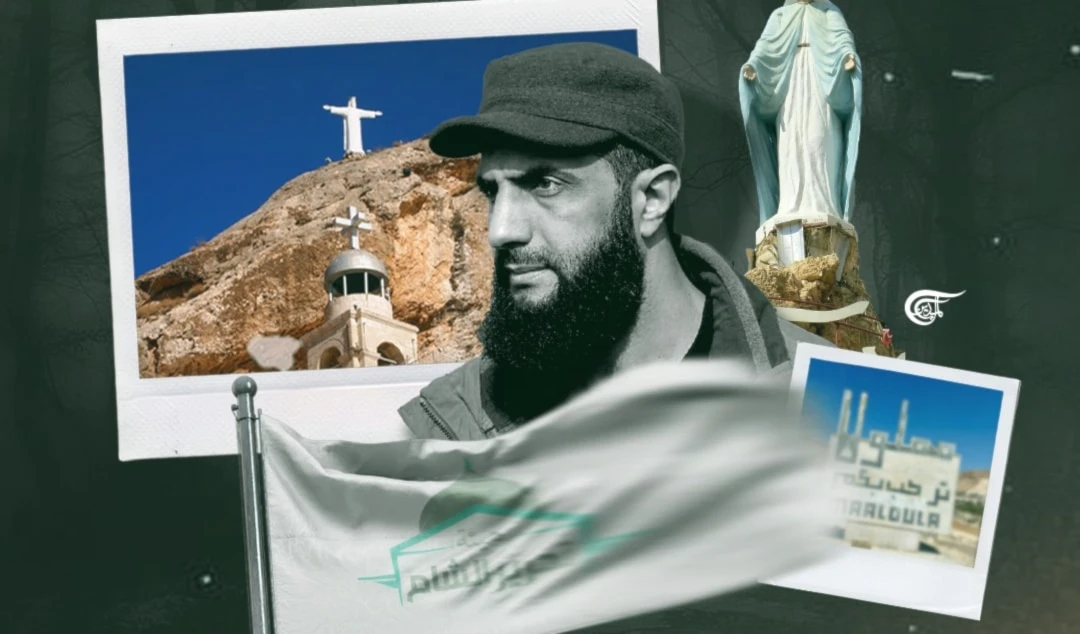50 years on: Time to be honest about the legacy of the October War
Conflicting narratives, distrust, and resilience, what are the enduring consequences and lessons of the 1973 October War of liberation in Egypt and Syria?
-

50 years on: Time to be honest about the legacy of the October War
Saturday, October 6th 1973, soldiers from the Syrian Arab Army stand at the ready, facing South. They are anxious but comforted by the presence of the thus-far-secret SAM Missile batteries behind them. Down by the Suez, their Egyptian counterparts stand at the ready, facing North. They are equally anxious but comforted by the sun's location directly behind them, illuminating their path and hiding them with its glare.
-

Surface to Air Missile (SAM) Battery October War Panorama Museum
The Egyptians hold massive hoses as their Syrian brothers clutch Kalashnikovs waiting for the signal. They have an injustice to rectify. The land and pride of their nations are at stake.
In complete silence, exactly at 2 PM, the Arab armies hear the signal. Legend has it that it came through Radio Sharq Al Adna in the form of the first notes from “خطة قدمكم عالارض هدارة” (Khatet Qadamkon) by the Arab world’s most famous singer, Fairouz.
As the Lebanese icon described the powerful stomps of the traditional Arab Dabke dance in her lyrics, the armies began their march forward, the Syrian artillery rained fire on the Golan, and the Egyptian military engineers launched a daring crossing of the Suez Canal.
-

The improvised canal bridge constructed by the Egyptian military engineers
The two Arab armies struck on Yom Kippur in search of redemption after having suffered major routs six years earlier. This war had come after a trilogy of Arab defeats: the 1948 Nakba, when the Zionist entity was established on Palestinian lands; the 1956 Suez War; and the 1967 Naksa.
During this last war, the Arab armies had their air forces decimated by preemptive Israeli strikes. Tens of thousands of young Egyptian, Jordanian, and Syrian men were martyred, and "Israel" – a settler colonial project that was, according to Arab media, on its way to erasure – tripled in size within six days at the expense of the people of the Golan, Sinai, Gaza, and the West Bank.
-

'Israel' before and after the Naksa
Glory, pride, and victory followed. The Arab armies conquered – through numerous battles – an army so arrogant that it thought itself invincible, they blew through defensive lines once thought impregnable with water hoses and sheer fortitude, and an Arab unity that never seemed possible manifested itself on the battlefields and in the halls of diplomacy. Those first days of the October War of Liberation became the zenith of the Pan-Arabism project and a resounding answer to the Palestinian Question.
-

Israeli military wreckage and captured units - October War Panorama Museum
However, while the flowery narrative of Arab victories and unity ends here, the story of that war does not. The ballads of glory were also met with accounts of betrayals and great defeats that are rarely, if ever, mentioned when the legacy of the war is discussed.
After the defeat that the Arabs suffered in ‘67, the liberation of one acre of land, and the defeat of one Israeli battalion would have been enough to set the streets of the Arab world ablaze with pride. And during the first days of the war, there was much to be proud of indeed.
The arrogance of the Zionist project was checked. History will never forget how the fearless one-eyed Moshe Dayan fell apart and proclaimed the imminent “fall of the third temple;” the names Alon and Bar Lev will always evoque supposedly impregnable defensive lines that were nevertheless smashed. History will also remember the images of Israeli Air Force pilots chained to their burning planes that circulated newspapers showing how the enemy resorted to drastic measures to prevent desertions out of fear.
-

Wreckage of a French-supplied Israeli Mirage jet - October War Panorama Museum
These leaps achieved in ‘73 were monumental on their own, and legendary when evaluated next to the shame of ‘67. Yet, as I perused through the halls of the October War Panorama Museum in Damascus, a museum commemorating the war, on the 2nd of October, I was met with a disparaging sense.
-

Statue of Hafez al-Assad October War Panorama Museum
The pomp and circumstance adorning the museum fails to acknowledge how badly the tide of war turned against the Arab armies by the third day. It fails to note that the Egyptians ended up losing African territory West of the Suez, and getting their 3rd army held hostage, and eventually forced to sign a normalization deal with unfavorable terms. The museum also ignores the fact that the Israeli army reached as close as 40 kilometers from the Syrian capital by the end of the war, and maybe would have even entered Damascus if not for the support of the Iraqi army.
The museum also had no maps showing the consequences of the war. While the Egyptians normalized in 1979 and got their Sinai back, the Syrians were only able to regain control of the town of Quneitra (out of the 460 square miles of the Golan), a town that is intentionally kept a destroyed wreck to showcase the barbarity of the Israelis who destroyed it before leaving it. The families of Quneitra who lost their lands in ‘67 are barred from reclaiming the only part of the Golan that was liberated in the October War of Liberation.
Impact 50 years On:
Two immediate points come to mind when considering the legacy of the war. First, during the writing of this article, the Israeli Air Force struck deep within Syrian sovereign territory with impunity, twice. These last two mark the 38th and 39th such strikes within Syrian airspace in 2023, a notable uptick from the total of 28 strikes in 2022. That said, the balance of power has largely shifted, and Syria’s sovereignty has been deemed non-existent by "Israel’s" Western supporters.
Second, as of the writing of this article, Saudi Arabia – the monarchy that punished the West for Operation Nickel Grass during which Kissinger and Nixon created an air bridge that supplied the Israeli army with 22,000 tons of weaponry – by imposing a strict oil embargo, is now faltering. Saudi-Israeli peace is “getting closer every day,” announced Saudi Crown Prince Mohammad Bin Salman on the 21st of September, to a normalization deal with “Israel” most likely without securing any real concessions. Out of the participants in the October War Morocco, Jordan, Egypt, and now Saudi Arabia have normalized with “Israel” without guaranteeing any concessions for the Palestinians.
Aside from these glaring setbacks, the West Bank remains under effective Israeli military control and has now become a Swiss cheese of horror, with half a million settlers living and terrorizing on what little land is slated to one day make up the Palestinian state. The Gaza Strip is an open-air prison that’s criminalized for resisting its subjugation, and the Golan Heights now host a three-slope ski resort and 30 settlements with 25 thousand settlers: numbers that are set to double by coming years.
-

Trump Heights, a new settlement set to open in the occupied Golan Heights
Looking Forward
As I wrote this article, I found myself searching for inspiration to write about such a complex and sensitive subject. The inspiration I ended up finding was on Google Maps. Using Google’s Street Viewer, I was able to practice my legal but impossible right as a Syrian and walk around the streets of the Golan, albeit virtually.
As I clicked from one corner to another, I felt a warmness toward the children I saw in Masada and an old woman sitting on her porch in Buq'ata, but most of all, I was moved by the plethora of graffiti all over the walls of the Golan.
-

Majdal Shams, graffiti reads 'I am Syrian' in Arabic
Two read: “I’m Syrian,” one read: “Down with the occupation,” and all around, I saw the Syrian flag painted on the walls of the Golan where raising the Syrian flag is punishable by six months imprisonment.
-

Majdal Shams, graffiti reads 'I am Syrian' in Arabic
As I saw these signs and read about the Golani strike of 81 and that the 25 thousand (mostly Druze) Syrians of the Golan – who had been whittled down from 150 thousand after a 56-year-long Israeli campaign of ethnic cleansing – had refused Israeli citizenship, I felt immense pride. "Israel" has no claim to our lands – international law clearly states that the annexation of the Golan is illegal with UN resolutions 242 and 338 – and yet here we are.
-

Majdal Shams, graffiti reads 'Down with the occupation' in Arabic
That is why the legacy of the October War – although it has to be redefined and reevaluated – must always be a positive source of pride for not only the Syrians and the Egyptians, but all those who believe in justice. When dealing with injustice the likes of the settler colonial Zionist project that maniacally believes in its righteousness and superiority over others, any form of resistance is a form of justice and must be lauded.
Therefore, the next time a Western official explains that the Golan Heights must remain in Israeli hands as it is of strategic security and military importance, ask what is the difference between the Golan and Crimea, then? What about the South China Sea?
-

Majdal Shams, two Syrian flags painted on walls

 Hekmat Aboukhater
Hekmat Aboukhater
 8 Min Read
8 Min Read











